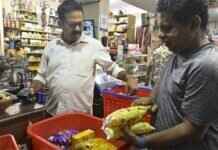National Hawkers Federation Calls for National Guidelines to Protect Street Vendors from Heatwaves
In a recent plea to the Centre, the National Hawkers Federation (NHF) emphasized the urgent need for national-level guidelines to safeguard street vendors from the escalating threat of heatwaves. The federation, representing over two crore vendors, highlighted the profound impact of rising temperatures on the lives and livelihoods of street vendors across the country.
The NHF underscored the alarming rise in the frequency and intensity of heatwaves, citing the stark reality of 2023 witnessing approximately 30 days of extreme heat conditions. To address this pressing issue, the federation called upon Prime Minister Narendra Modi and Union Environment Minister Bhupender Yadav to include heatwaves in the list of notified disasters under the Disaster Management Act.
Double Impact on Street Vendors
Street vendors, according to the NHF, are grappling with a “double impact” as they face health risks from prolonged exposure to high temperatures and economic losses due to reduced customer footfall. The federation highlighted the various health issues vendors encounter, including heat exhaustion, dehydration, dizziness, and heat strokes. Moreover, the impact of heatwaves extends to perishable goods, leading to substantial financial setbacks for vendors dealing with heat-sensitive items like fresh produce and dairy products.
Despite these challenges, street vendors often lack basic infrastructure such as shade, drinking water, and first-aid support, leaving them vulnerable to the adverse effects of extreme heat. In light of these circumstances, the NHF urged the government to integrate vendor protection measures into the National Disaster Management Authority’s (NDMA) guidelines and ensure their implementation by state and urban bodies.
Vendor Protection Measures Proposed by NHF
Understanding the critical need for immediate action, the NHF proposed a series of protective measures to mitigate the impact of heatwaves on street vendors. These measures include advance planning by local authorities, the installation of public hydration stations, provision of umbrellas and temporary shade structures, and distribution of essential items such as oral rehydration salts, cooling towels, and caps.
Moreover, the federation recommended the establishment of shaded rest areas near markets and the formation of vendor-led response teams trained to handle heat stress emergencies. Additionally, the NHF emphasized the importance of developing street vending zones with green cover and heat-resistant materials as part of long-term urban planning efforts to ensure the safety and well-being of street vendors.
General Secretary of NHF, Saktiman Ghosh, emphasized the essential role of street vendors in India’s informal economy and stressed the necessity of providing them with adequate protection amidst rising temperatures. Ghosh called on the central government to issue clear guidelines to states and urban local bodies, integrating them into the NDMA framework to enhance broader climate resilience and urban planning measures.
Government Action and Expert Insights
Mecanzy Dabre, Deputy General Secretary of the federation, urged the government to allocate sufficient funding to heat action plans, declare heatwaves as a national disaster, and extend necessary support to street vendors facing the brunt of extreme weather conditions. Notably, the NHF’s call for the inclusion of heatwaves under the Disaster Management Act aligns with previous requests from state governments to expand the list of eligible disasters for National Disaster Response Fund (NDRF) and State Disaster Response Fund (SDRF) assistance.
While the Union Earth Sciences Minister Jitendra Singh acknowledged states’ appeals to include heatwaves as a notified disaster, the 15th Finance Commission did not find merit in the proposal. Despite the staggering toll of 10,635 lives claimed by extreme heat and sunstroke in India over a ten-year period, public health experts suggest that the official count of heat-related deaths may be underreported.
Looking ahead, the weather department forecasted above-normal temperatures from April to June, with an increase in heatwave days expected across central and eastern India and the northwestern plains. As some states brace for 10 to 11 heatwave days during this period, the NHF’s advocacy for national guidelines to protect street vendors gains greater urgency in the face of escalating climate challenges.
In conclusion, the NHF’s call for national guidelines to safeguard street vendors from heatwaves underscores the critical need to prioritize the well-being and safety of those operating in the informal economy. By integrating protective measures into disaster management frameworks and urban planning initiatives, policymakers can ensure the resilience of street vendors facing the adverse impacts of climate change. As India grapples with the repercussions of extreme heat events, concerted efforts to protect vulnerable populations like street vendors are imperative for building a more sustainable and inclusive society.














